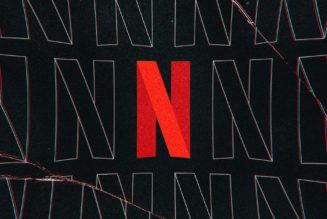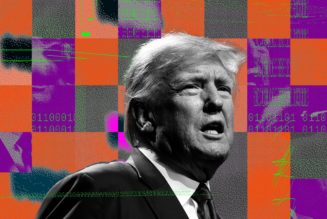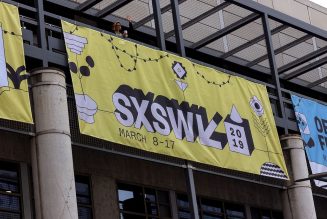/cdn.vox-cdn.com/uploads/chorus_asset/file/23587766/acastro_220524_STK428_0002.jpg)
I have been somewhat unsure of what to make about The Wall Street Journal and The New York Times’ reports about text messages, sent on Signal, between rivals Changpeng “CZ” Zhao and Sam Bankman-Fried around the time FTX went up in smoke. That’s because I am not entirely sure who leaked them or who stands to benefit. But I’m pretty sure someone leaked to both of those outlets because the reports went up within hours of each other. So someone wants everyone to know about this!
Because I don’t understand what’s going on, I’m going to walk through these two stories, which are the same in broad brushstrokes, suggesting that the sourcing was similar. (As longtime readers know, reidentifying anonymous sources is one of my favorite games, though it is usually played within the confines of my own skull.) Here’s what sticks out.
a:hover]:shadow-highlight-franklin [&>a]:shadow-underline-black dark:[&>a:hover]:shadow-highlight-franklin dark:[&>a]:shadow-underline-white md:text-30″>Exchange coordination
So I guess I’ll start with the thing that raised my eyebrows: a group chat the Journal reports was called “Exchange coordination.” What?
Like, okay, we have Zhao and Bankman-Fried, okay. Also in these chats, per the Journal, were Tether’s Paolo Ardoino, Tron’s Justin Sun, and Kraken co-founder Jesse Powell. That’s one hell of a group chat.
I mean, don’t get me wrong, I suspect JPMorgan CEO Jamie Dimon has Goldman Sachs CEO David Solomon’s phone number and that both of them probably have Wells Fargo CEO Charles Scharf’s phone number, too. I bet any of them can call Citi CEO Jane Fraser whenever they want! But I don’t think they’re all sitting in a group chat called “big bank coordination,” not least because that’s the sort of thing that works antitrust lawyers into a lather.
The most charitable explanation for “Exchange coordination,” I guess, is that it’s crypto’s ersatz version of something like Swift, which is a messaging platform after all. It just looks awfully funny.
a:hover]:shadow-highlight-franklin [&>a]:shadow-underline-black dark:[&>a:hover]:shadow-highlight-franklin dark:[&>a]:shadow-underline-white md:text-30″>Unstablecoins
The next thing that stuck out to me was Tether. I have a longstanding fascination with Tether, not least because its execs keep going on CNBC to embarrass themselves. (It is funny every time!) In this case, it stands out because it’s a stablecoin, and Bankman-Fried has some history with stablecoins. In particular, The New York Times previously reported that the feds are looking into his firm’s Terra / Luna trades to see if they were market manipulation.
Most of the sell orders on Terra, the algorithmic stablecoin that depegged, came from FTX’s sister company Alameda Research — which also had shorted Luna. The death spiral on the tokens led to a massive amount of market contagion, taking down — among others — Three Arrows Capital, Celsius, and Babel Finance.
Two things stand out to me here. The first is that, hilariously, the contagion likely was part of how Alameda and FTX fell, as people panicked. But the second is much less funny: FTX was listing Terra / Luna as Alameda traded against them. That sucks for retail investors, man.
“The more damage you do now, the more jail time.”
In the chat on November 10th, Tether’s Ardoino “expressed concerns that Alameda was trying to push down the price of Tether and drag other cryptocurrencies with it,” the Journal reports. Tether is a major token used widely in crypto — should something happen to it, a lot of the industry is in big trouble.
“Stop now, don’t cause more damage,” Zhao wrote in the chat to Bankman-Fried, according to The New York Times. “The more damage you do now, the more jail time.” He also pointed to a trade of $250,000 by Alameda and claimed it was meant to destabilize Tether.
Weird claim, on its face. A trade of $250,000 in Tether is like, a Tuesday. But! The allegations about Alameda’s Terra / Luna trades don’t suggest one big trade but a lot of small ones. The Wall Street Journal cites “a person close to Alameda” saying that the trades were aimed at “closing down positions and returning money to lenders.” I don’t know who the source on that was, but it’s not outside of the realm of possibility it’s Bankman-Fried himself since that explanation does benefit him and, as I think we’ve all discovered, he has a killer case of “can’t shut the fuck up”-itis.
Also, for the record, Bankman-Fried told both the Times and the Journal that “to my knowledge neither myself nor Alameda has ever attempted to intentionally depeg Tether or any other stablecoins.”
a:hover]:shadow-highlight-franklin [&>a]:shadow-underline-black dark:[&>a:hover]:shadow-highlight-franklin dark:[&>a]:shadow-underline-white md:text-30″>Who benefits?
My initial impulse is that the chats here might have been leaked by Bankman-Fried — due to the aforementioned “can’t shut the fuck up”-itis. I’m just not sure what the motive here would be. Shifting blame away from himself as the sole bad actor to a larger group of industry players? After all, revealing the existence of the group chat doesn’t make sense for most of the participants.
Bolstering that suspicion is the byline on the Times story: David Yaffe-Bellany, who wrote a story back in November that revealed Bankman-Fried was sleeping just fine after the collapse of his empire.
On the other hand, the emphasis on stablecoins seems strange to me. Zhao’s exchange, Binance, booted a lot of stablecoins — Circle’s USDC, the Paxos dollar, and TrueUSD — in favor of its own, BUSD, which is issued in partnership with Paxos. Meanwhile, Coinbase has suggested that anyone who’s using Tether should use USDC instead. We know from the fall of FTX that Zhao will ruthlessly kneecap competitors since the revelations about FTX’s true financial state came after Zhao announced he’d flood the market with FTX’s FTT token. So there’s a possibility that the source on these chats is Zhao himself, looking to make Bankman-Fried look even worse.
In fact, Zhao publicly chastised Kevin O’Leary, the investor and Shark Tank star, for defending Bankman-Fried just this morning. If the chats make Bankman-Fried look uniquely bad among his peers, Zhao looks good by comparison.
Someone is playing with fire here, and I don’t know who
There’s a third, outside possibility. Caroline Ellison was the CEO of Alameda when all of this was going on. Given the coordination between Bankman-Fried and Alameda, I suspect she was aware of this chat — regardless of whether she was in it. She loses nothing from making everyone else look worse. She also fits the bill for “a person close to Alameda” as cited in The Wall Street Journal.
As for the likelihood that another player in the chats — Ardoino, Sun, or Powell — leaked them, I’m doubtful. Those players all stand to lose from revealing coordination between exchanges. Plus, the chats make Tether look very vulnerable. Because it plays such a key role in crypto, kicking it over would likely trigger an even bigger meltdown than what we’ve already seen. But who knows! If I’ve learned one thing over the last year, it’s that crypto is full of highly chaotic drama queens.
Someone is playing a dangerous game, and I don’t know who. What I do know is that the elephants are dancing the tarantella, and if I were a mouse in the crypto industry, I would do my best to stay out of the way.









